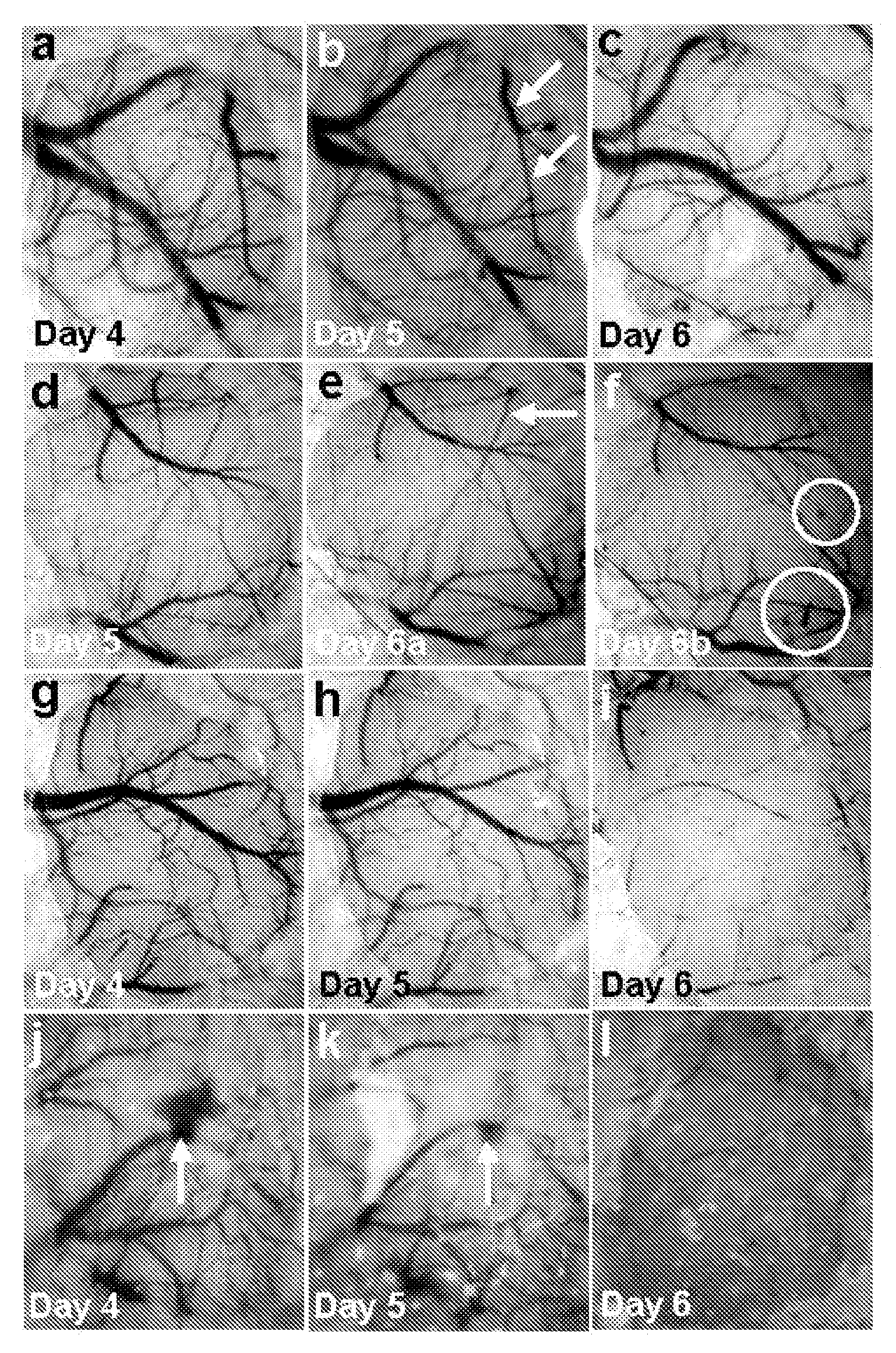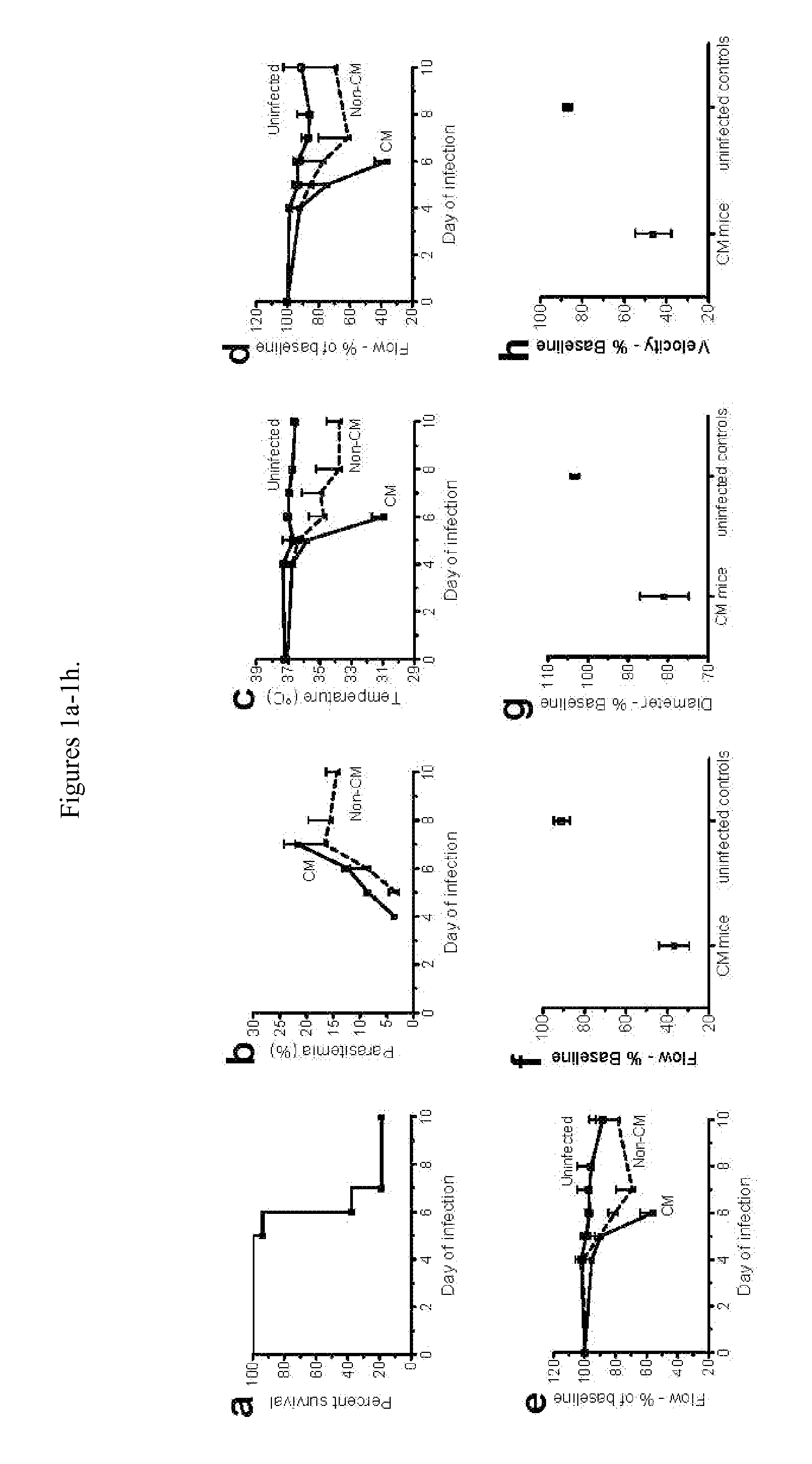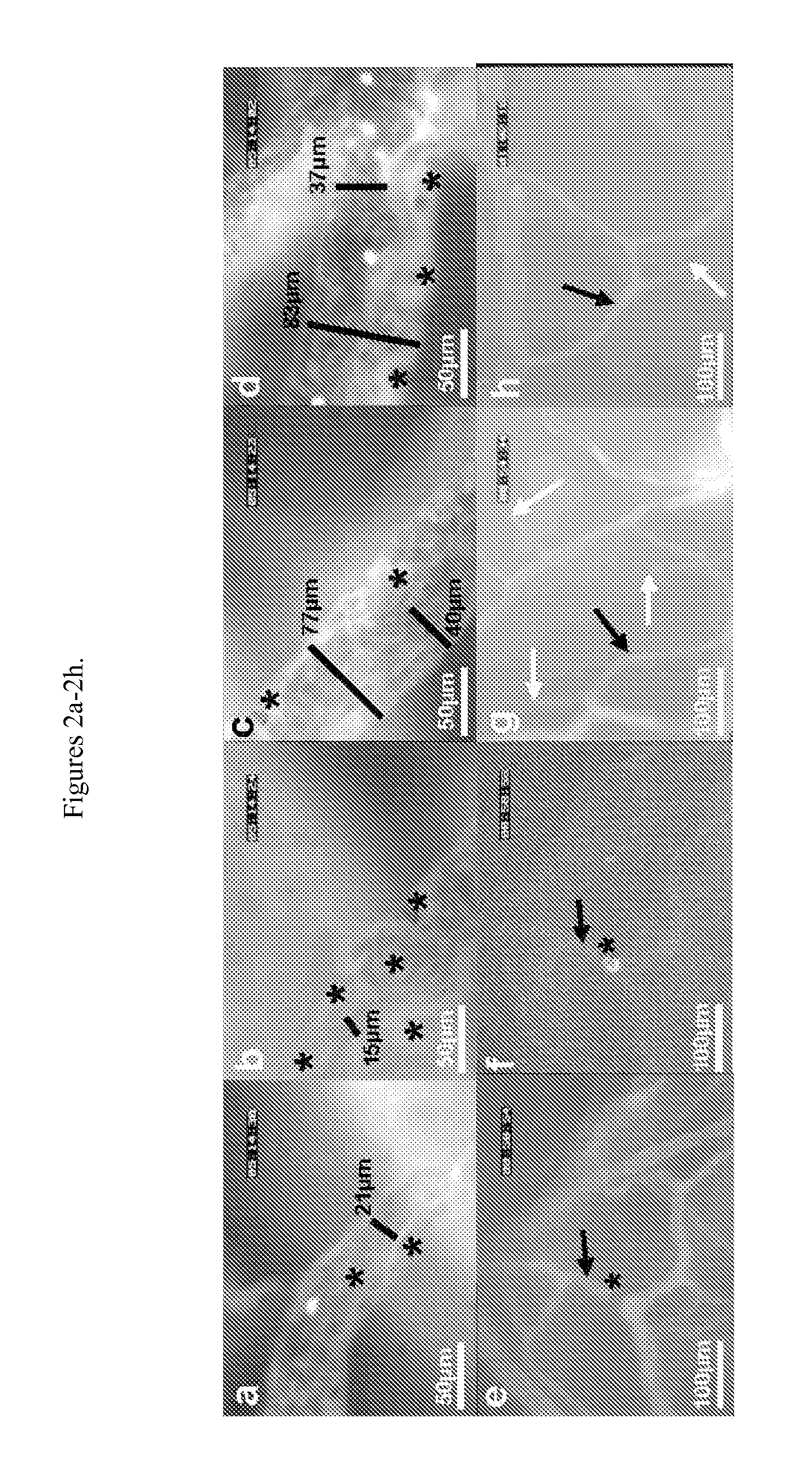Treatment of malaria
a technology for malaria and compositions, applied in the field of compositions for the treatment of malaria, can solve problems such as rapid development into life-threatening complications, and achieve the effect of improving the therapeutic effect and promoting vasodilation
- Summary
- Abstract
- Description
- Claims
- Application Information
AI Technical Summary
Benefits of technology
Problems solved by technology
Method used
Image
Examples
example 1
Parasite, Infection and Clinical Assessment
[0045]All protocols were approved by the La Jolla Bioengineering Institutional Animal
[0046]Care and Use Committee. Eight to 10-week old C57B1 / 6 mice (Jackson Laboratories, ME) were inoculated intraperitoneally with 1×106 Plasmodium berghei ANKA (PbA) parasites expressing the GFP protein (obtained from MR4-NIH, deposited by C J Anders and A Waters). Parasitemia, body weight and rectal temperature were checked daily from day 4. A motor behavior assessment modified from the SHIRPA protocol was used to determine the clinical status of the animals (Lackner, et al., Neuropathol Appl Neurobiol. 2006, 32, 177-188). Five tests were performed: transfer arousal, locomotor activity, tail elevation, wire maneuver and righting reflex. For each test, mice received an individual score, and the sum of scores was used to create a composite score.
example 2
Intravital Microscopy
[0047]The closed cranial window model (See Mostany, et al., J Vis Exp. 2008, 15, pii: 680) was used. Briefly, mice were anesthetized with ketamine-xylazine, the head held on a stereotaxic frame, the scalp cut off and a 3-4 mm diameter skull opening was made in the left parietal bone using a surgical drill. The exposed area was covered with a 5 mm glass cover slip glued with dental acrylic. Carprofen and ampicillin were given for 3-5 days to prevent pain, inflammation and infection. Two weeks after surgery, mice were lightly anesthetized with isoflurane (4% for induction, 1-2% for maintenance) and held on a stereotaxic frame. A panoramic picture of the window was taken and then mice were transferred to an intravital microscope stage (customized McBain, San Diego, Calif.). Body temperature was maintained using a heating pad. Using water-immersion objectives (20×), blood vessel images were captured (COHU 4815, San Diego, Calif.) and recorded on video-tape. An image...
example 3
Treatment
[0049]PbA-infected mice presenting poor righting reflex, hypothermia and / or other clinical signs of neurological involvement such as ataxia, limb paralysis, seizures and / or roll-over were treated with artemether (Artesiane, Dafra Pharma, Belgium, a kind gift of Dr Alberto Moreno, Emory University, Atlanta, Ga.) given IP at 50 mg / kg, in combination with nimodipine (Sigma, St Louis, Mo.) or vehicle (ethanol:polyethyleneglycol (PEG) 400:saline in 1:1:8 v / v). Nimodipine was dissolved in ethanol (EMD, NJ), dispersed with polyethyleneglycol 400 (PEG, Sigma) and then saline was added (1:1:8 v / v) and mixed thoroughly. This solution was administered intraperitoneally in three different doses: 1.3 mg / kg, 4 mg / kg and 12 mg / kg. Artemether was given daily for 5 days, and nimodipine or vehicle were given at 0, 12, 24 and 36 hours. Parasitemia, motor behavior and rectal temperature were checked at each timepoint and daily afterwards. After treatment, parasitemia was checked by microscopic...
PUM
| Property | Measurement | Unit |
|---|---|---|
| Mass | aaaaa | aaaaa |
| Mass | aaaaa | aaaaa |
| Mass | aaaaa | aaaaa |
Abstract
Description
Claims
Application Information
 Login to View More
Login to View More - R&D
- Intellectual Property
- Life Sciences
- Materials
- Tech Scout
- Unparalleled Data Quality
- Higher Quality Content
- 60% Fewer Hallucinations
Browse by: Latest US Patents, China's latest patents, Technical Efficacy Thesaurus, Application Domain, Technology Topic, Popular Technical Reports.
© 2025 PatSnap. All rights reserved.Legal|Privacy policy|Modern Slavery Act Transparency Statement|Sitemap|About US| Contact US: help@patsnap.com



